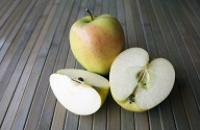
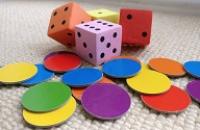
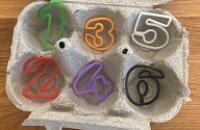
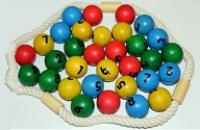
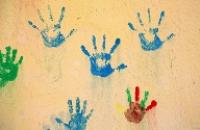
Children often... The starting point is an activity with which children naturally engage.
Adults could... Here, suggested ways to build on the intitial activity are offered.
Brief description including any possible health and safety issues
Encouraging mathematical thinking and reasoning: These bubbles offer lots of opportunities, prompts and possible routes through the activity supporting the children's mathematical thinking, reasoning and communicating. These activities can be revisited a number of times with different responses from the children on each occasion. Some of the subsections will not be relevant to every activity. Each colour links to a different aspect.
'What do you notice?' questions - These help children to spot patterns and relationships (pattern sniffing). It is about seeing something general from a range of particular examples e.g. the first person is always at the front of the queue.
'What can you see?' questions - How is it similar to or different from ...? These are about exploring, describing and comparing different mathematical aspects of contexts.
How do you know that? Why is it true? Is it always true? These encourage children to think and reason mathematically. They form the beginnings of mathematical justification and proof.
What will happen if you undo that action? If you do it again? Doing and undoing things (like putting it into the basket and taking it out) are very important in mathematics. These help children to engage with these processes.
These help children to conjecture and imagine what will happen if they change or alter something.
They may predict what will happen and thinking about these questions can help them to visualise the mathematical context.
These support mark making and recording. The children might use pictures, their own marks or symbols. It could include taking photos and annotating them with children's comments.
The Mathematical Journey
In this section we unpack the big mathematical ideas taken from the curriculum strands and elaborate on them, providing examples. We offer examples of vocabulary that the children might use and illustrate their potential responses and progression through the ideas involved in the activity. These descriptions will help to identify the children's learning journey through the activity. An example might be developing use of language to compare, contrast and describe.
This section suggests other linked activities that would cover similar mathematical ideas. We aim to illustrate a range of other experiences in which the same ideas could be explored. Many of these scenarios are part of the familiar scene of the EYFS classroom. We also offer ideas for taking the mathematics a step further.
Story, rhyme and song links
We share stories, rhymes or songs that are relevant to the activity.
The resources required to undertake the task as described with a group of children, plus additional resources for widening out the idea.
Download a PDF of this resource.

